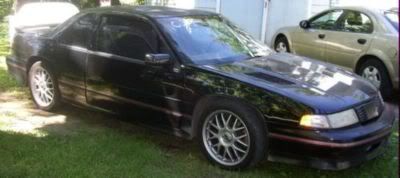OK the Amp I have is not pushing enough Power to the Speakers what I would like to know is can I Take 2 amp outs and connect to 1 Speaker. I have tried doing 2 separate Lines and then connecting to the Input Connectors on the Speaker but that sends my AMP into a Surge Suppression Mode
Here is the Info on the equipment
2 VuiSonic 1000 watt subs
Sony 600w 4/3 channelAmp
AMP = Sony XM-554ZR
Maximum power output of 110 W per channel
(at 4 Ω).
•This unit can be used as a bridging amplifier
with a maximum output of 300 W.
•Built in Low-pass filter (80 Hz, – 18 dB/oct) and
High-pass filter (80 Hz, – 12 dB/oct).
•Protection circuit and indicator provided.
•Hi-level Sensing Power On feature allows unit
to be activated without need for REMOTE
connection.
•Pulse power supply* for stable and regulated
output power.
•Direct connection can be made with the speaker
output of your car audio unit if it is not
equipped with the line output (High level input
connection).
Circuit system OTL (output transformerless)
circuit
Pulse power supply
Inputs RCA pin jacks
High level input connector
Input level adjustment range
0.3 – 6 V (RCA pin jacks),
2.8 – 12 V (High level input)
Outputs Speaker terminals
Speaker impedance 2 – 8 Ω (stereo)
4 – 8 Ω (when used as a
bridging amplifier)
Maximum output 4 Speakers: 110 W × 4 (at 4 Ω)
3 Speakers: 150 W × 2 (at 2 Ω) +
300 W × 1 (BTL, at 4 Ω)
Rated output (supply voltage at 14.4 V)
4 Speakers:
55 W × 4 (20 Hz – 20 kHz, 0.04
% THD, at 4 Ω)
65 W × 4 (20 Hz – 20 kHz, 0.1 %
THD, at 2 Ω)
Frequency response 5 Hz – 50 kHz ( dB)
Harmonic distortion 0.005 % or less (at 1 kHz, 4 Ω)
Low-pass filter 80 Hz, –18 dB/oct
High-pass filter 80 Hz, –12 dB/oct
Power requirements 12 V DC car battery (negative
ground)
Power supply voltage
10.5 – 16 V
Current drain at rated output: 30 A (4 Ω, 55 W
× 4)
Remote input: 1 mA
Dimensions Approx. 401 × 55 × 264 mm (15
7/8 × 2 1/4 × 10 1/2 in) (w/h/d)
not incl. projecting parts and
controls
Mass Approx. 3.2 kg (7 lb 1 oz) not
incl. accessories
Supplied accessories Mounting screws (4)
High level input cord (1)
Protection cap (1)
Tell me if you need more Info on this setup
Please Don't FLAME like title says I am a complete audio NEWB :shrug:
Edit/Delete Message
Here is the Info on the equipment
2 VuiSonic 1000 watt subs
Sony 600w 4/3 channelAmp
AMP = Sony XM-554ZR
Maximum power output of 110 W per channel
(at 4 Ω).
•This unit can be used as a bridging amplifier
with a maximum output of 300 W.
•Built in Low-pass filter (80 Hz, – 18 dB/oct) and
High-pass filter (80 Hz, – 12 dB/oct).
•Protection circuit and indicator provided.
•Hi-level Sensing Power On feature allows unit
to be activated without need for REMOTE
connection.
•Pulse power supply* for stable and regulated
output power.
•Direct connection can be made with the speaker
output of your car audio unit if it is not
equipped with the line output (High level input
connection).
Circuit system OTL (output transformerless)
circuit
Pulse power supply
Inputs RCA pin jacks
High level input connector
Input level adjustment range
0.3 – 6 V (RCA pin jacks),
2.8 – 12 V (High level input)
Outputs Speaker terminals
Speaker impedance 2 – 8 Ω (stereo)
4 – 8 Ω (when used as a
bridging amplifier)
Maximum output 4 Speakers: 110 W × 4 (at 4 Ω)
3 Speakers: 150 W × 2 (at 2 Ω) +
300 W × 1 (BTL, at 4 Ω)
Rated output (supply voltage at 14.4 V)
4 Speakers:
55 W × 4 (20 Hz – 20 kHz, 0.04
% THD, at 4 Ω)
65 W × 4 (20 Hz – 20 kHz, 0.1 %
THD, at 2 Ω)
Frequency response 5 Hz – 50 kHz ( dB)
Harmonic distortion 0.005 % or less (at 1 kHz, 4 Ω)
Low-pass filter 80 Hz, –18 dB/oct
High-pass filter 80 Hz, –12 dB/oct
Power requirements 12 V DC car battery (negative
ground)
Power supply voltage
10.5 – 16 V
Current drain at rated output: 30 A (4 Ω, 55 W
× 4)
Remote input: 1 mA
Dimensions Approx. 401 × 55 × 264 mm (15
7/8 × 2 1/4 × 10 1/2 in) (w/h/d)
not incl. projecting parts and
controls
Mass Approx. 3.2 kg (7 lb 1 oz) not
incl. accessories
Supplied accessories Mounting screws (4)
High level input cord (1)
Protection cap (1)
Tell me if you need more Info on this setup
Please Don't FLAME like title says I am a complete audio NEWB :shrug:
Edit/Delete Message


Comment